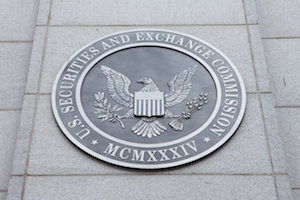 In early November and without warning, the Securities and Exchange Commission (SEC) said it would repropose a nearly 20-year-old rule to eliminate the potential for late trading and repricing of mutual fund shares after the market’s close.
In early November and without warning, the Securities and Exchange Commission (SEC) said it would repropose a nearly 20-year-old rule to eliminate the potential for late trading and repricing of mutual fund shares after the market’s close.
The announcement sent retirement plan-related organizations scrambling to understand its potential impact and provide helpful information to the SEC about how it would affect retirement savers.
First proposed in 2003 to combat what the commission called “late trading, market timing, and related abuses,” critics point to prohibitive cost and logistical considerations, particularly for record-keeping operations.
“The SEC acknowledged that the retirement plan industry is going to face particular challenges when complying with a 4:00 pm hard close and that record keepers may have to alter their processes to accommodate it,” Allison Wielobob, General Counsel of the American Retirement Association (ARA), said. “The reason is the way in which retirement plans transact mutual funds trades.”
The 2003 proposal received significant pushback for the potential harm to plan participants. The SEC admitted in its latest release that a hard close would require substantial processing changes.
Wielobob said the ARA is currently evaluating its impact and attempting to help the SEC understand the rule’s ramifications before the public comment period’s Feb. 14 deadline.
“We’ve gone in once to speak with them and expect to try again, though that hasn’t been planned yet,” she added. “So, that’s where we are.”
High-profile ERISA attorney Marcia Wagner agreed that difficulties associated with the hard close would likely require transaction processing changes, citing plan loans as an example. Yet, she was more optimistic about the impact on retirement savers.
“In recognition of the difficulties the proposal would have for other parties, in addition to recordkeepers, the SEC solicited comments on three alternatives to a hard close,” Wagner said. “However, for most plan investors, I do not believe that the hard close proposal, if adopted, would have a significant effect.”
The reintroduced proposal is part of a larger effort to better regulate liquidity risk, especially in times of market stress, with SEC Chair Gary Gensler pointing to problems with redemptions at the onset of the COVID-19 pandemic.
The SEC argued a 4:00 pm hard close would improve order processing and help to operationalize swing pricing, which allows managers to adjust the NAV when securities' inflows or outflows exceed a predetermined threshold. The Brookings Institution explained that the fund can then pass along the associated trading costs to those making the trades to better protect remaining shareholders from dilution.
Scandal Origins
In 2003 and 2004, the SEC and former New York state Attorney General Eliot Spitzer investigated allegations against dozens of banks and mutual fund companies that they favored large institutional investors over ordinary long-term shareholders.
The Washington Post reported that many admitted to after-hour trading deals with certain customers, with some executives profiting at smaller investors’ expense. The firms also made short-term trades that exploited timing differences, contradicting language in fund prospectuses that supposedly discouraged the practice.

